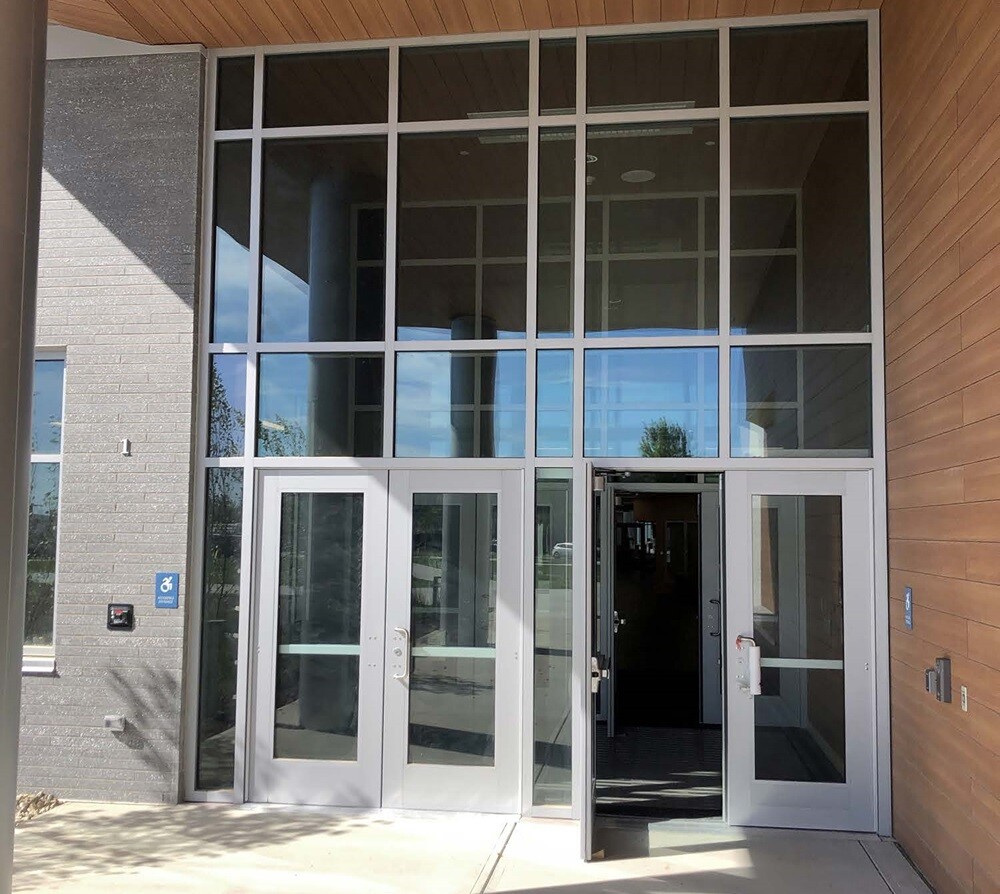You don’t necessarily need bulletproof frames when installing bullet-resistant glass. But not every type of bulletproof glass is compatible with frames designed for non-rated, normal windows. If you need a higher level of protection or a large bulletproof barrier system, the weight and thickness of ballistic glass usually prevents you from reusing your current frames.
In this blog, we break down when it’s possible to reuse your frames, when it’s not, and what your options are.
Three Reasons You May Need New Bulletproof Frames
Most people need to replace frames for three reasons: safety, thickness, and weight.
1. You Need Your Frames to Be Bullet Resistant
If you want to stop bullets, you need products that are designed to stop bullets in place. However, some circumstances are less risky than others.
For example, if you’re installing bulletproof glass in a wall that is built out of brick, stone, or cinder block (all of which are naturally bullet-resistant) the likelihood of a bullet piercing the very small gap between the bulletproof glass and the wall, going through the frame, and harming someone is very low.
In other situations, a non-rated frame is much riskier. Imagine a glass curtain wall in an office lobby. These usually have fairly thick framing elements for structural stability. If you replace the standard glass with ballistic glazing while leaving the frame as-is, people behind the glass remain vulnerable to gunfire because bullets can still puncture the frame. If you’re not sure what your options are for re-using your existing window frame, don’t hesitate to ask a bulletproof glass professional.
2. Your Bulletproof Glass Won’t Fit in the Original Frame System
Most people who choose to replace their framing system do so because their glass simply won’t fit in what they have; standard window glass is thinner than bulletproof glass.
Depending on the type of frames you have and the type of bulletproof glass you need, the bulletproof glazing may be slim enough to fit in the old frame. If you need a lower UL level of protection, this isn’t a problem. But if you’re looking for a higher level of protection or insulated ballistic glass (that includes an air gap), re-using the original framing system may not be an option. Reusing frames limits your ballistic glazing options, so be sure to discuss your options with a ballistic barrier expert.
3. Your Existing Frames Cannot Structurally Support the Weight of the Bulletproof Glass
Ballistic glazing is always heavier than standard glazing—in some cases, it’s nearly twice as heavy. On smaller windows, this may be an issue. But in a floor-to-ceiling window, even Level 1 GCP could prove to be too heavy for your existing frame to handle. If your frame isn’t strong enough to carry the glass, it will sag over time, causing you to lose the protection you need.
Backglazing Is an Alternative to New Bulletproof Windows and Bulletproof Frames
If you need a higher level of protection, but don't want to or can’t remove your existing framing, backglazing may be an option. With backglazing, you install a layer of ballistic glass inside the existing window, creating a transparent backstop to catch bullets without disturbing the exterior of the building. It’s a great option for large windows that would be difficult to replace with bulletproof glass. If you want to learn whether backglazing is right for you, don't’ hesitate to reach out to an expert at TSS for more information.
TSS Can Help You Find the Right Bulletproof Glass and Framing Solutions
If you want to keep your existing frames, this is something the TSS team can usually find a way to accommodate. We’re eager to help you find the best option that meets your security needs while making responsible use of your resources. Our free Ballistic Framing Solutions Guide and other educational materials will help you start to determine what’s right for your facility, organization, staff, and visitors.
If you have any questions, or are ready to begin moving forward with a project, we’re here to help. Contact us. You’ll hear back quickly from experts who are ready to listen.

